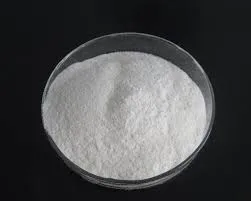
nóv . 21, 2024 23:16 Back to list
hydroxyethyl cellulose hec
Hydroxyethyl Cellulose (HEC) A Versatile Polymer in Various Applications
Hydroxyethyl cellulose (HEC) is a nonionic, water-soluble polymer derived from cellulose, the most abundant organic polymer on Earth. It is created through the etherification of cellulose with ethylene oxide, which introduces hydroxyethyl groups into the cellulose structure. The result is a highly versatile material that is widely used in numerous industries, including pharmaceuticals, food, cosmetics, and construction. This article delves into the properties, applications, and benefits of HEC, highlighting its significance in contemporary formulations.
Chemical and Physical Properties
HEC is characterized by its ability to dissolve in water, forming a clear and viscous solution. Its degree of substitution, which refers to the average number of hydroxyethyl groups attached to each glucose unit, can vary, resulting in different viscosity grades suited for various applications. The viscosity of HEC solutions is affected by factors such as concentration, temperature, and pH, making it a valuable thickening agent. Additionally, HEC exhibits excellent film-forming properties and can operate effectively as a stabilizer and emulsifier.
The polymer's nonionic nature means it is less sensitive to ionic strength and pH compared to ionic cellulose derivatives, opening up a broader range of applications. HEC is also biodegradable and offers a favorable safety profile, making it a preferred choice in many formulations.
Applications Across Industries
1. Pharmaceuticals HEC is widely used in pharmaceutical formulations. It serves as a binder in tablet manufacturing, helping to ensure uniformity and stability in tablet composition. Additionally, it acts as a thickening agent in gels and ointments, improving the consistency and feel of topical products. HEC's ability to control the release of active ingredients makes it valuable in sustained-release formulations, enhancing therapeutic effectiveness.
2. Food Industry In food products, HEC is utilized as a thickener, stabilizer, and emulsifier. Its ability to retain moisture helps improve the texture and shelf life of various food items, ranging from sauces to dressings. HEC can help stabilize emulsions, preventing the separation of ingredients and enhancing the overall quality of food products.
hydroxyethyl cellulose hec

3. Cosmetics and Personal Care The cosmetic industry benefits from HEC's thickening abilities, making it an essential ingredient in creams, lotions, and hair care products. Its film-forming properties contribute to improved texture and application experience, while ensuring that products maintain their consistency over time. Moreover, HEC is often used in gel formulations, providing a refreshing and soothing feel on the skin.
4. Construction and Building Materials In construction, HEC acts as a water-retaining agent in cement, plaster, and tile adhesives. By improving workability and enhancing water retention, HEC facilitates better adhesion and durability of construction materials. Its inclusion in building mixes also contributes to the prevention of cracking and shrinkage during the curing process.
Advantages of HEC
The benefits of using hydroxyethyl cellulose are numerous. First and foremost, its non-toxic nature makes it suitable for applications where safety is paramount, such as in pharmaceuticals and food products. Additionally, HEC is highly versatile, allowing formulators to tailor its characteristics according to specific requirements. Its biodegradability adds to its appeal, particularly in environmentally-conscious formulations.
Moreover, HEC is available in various grades, enabling manufacturers to select the appropriate viscosity and functionality for their specific applications. This adaptability combined with its effectiveness makes HEC an invaluable ingredient across numerous industries.
Conclusion
In summary, hydroxyethyl cellulose (HEC) is a remarkable polymer that plays a crucial role in various applications, from pharmaceuticals to food and cosmetics. Its unique properties, including water solubility, thickening ability, and film-forming characteristics, make it a preferred choice for formulators seeking reliable and effective ingredients. As industries continue to innovate and prioritize sustainability, the demand for versatile and biodegradable materials like HEC is likely to grow, solidifying its place as a cornerstone in modern formulations.
-
Versatile Hpmc Uses in Different Industries
NewsJun.19,2025
-
Redispersible Powder's Role in Enhancing Durability of Construction Products
NewsJun.19,2025
-
Hydroxyethyl Cellulose Applications Driving Green Industrial Processes
NewsJun.19,2025
-
Exploring Different Redispersible Polymer Powder
NewsJun.19,2025
-
Choosing the Right Mortar Bonding Agent
NewsJun.19,2025
-
Applications and Significance of China Hpmc in Modern Industries
NewsJun.19,2025







